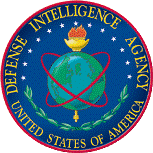United States Department of Defense

United States Department of Defense Military Intelligence
Date of this Version
11-1959
Document Type
Article
Abstract
This is a textbook used at the Army Quartermaster School. In the 1950s, military schools related to one of the Army Technical Services were run by that service. Since the format and content of Army field manuals were often very similar to those of special texts, the same staffs often prepared both
The modern US Army vision of the technical intelligence developed during World War II. Shortly before World War II, Army Technical Services had been instructed to set up intelligence sections in the offices of their chiefs. The technical services were bureaus which supplied weapons, equipment, and services to the Army, managed the careers of officers in a particular branch, trained specialists, and organized and trained special purpose military units. There were a number of technical services including the Chemical Warfare Service, the Medical Department, the Ordnance Department, the Quartermaster Corps, the Transportation Corps, etc. The Quartermaster Corps provided food, housing, and clothing and burial and grave registration services to the Army. It managed the careers of officers commissioned in the Quartermaster branch. The head of the Quartermaster Corps was a general with the title of the Quartermaster General. The Office of the Quartermaster General was the headquarters of the Quartermaster Corps in Washington, DC.
During World War II, the importance of studying foreign military equipment had become apparent and procedures for collecting and evaluating of equipment had been developed. Technical intelligence organizations in the Technical Services grew and operating procedures were developed and refined. Technical intelligence came to be defined as production and dissemination of intelligence about foreign weapons and equipment and production and dissemination of intelligence about foreign capabilities analogous to those of the technical services in the US Army. For example, during the 1950s, the Quartermaster Corps was responsible for intelligence concerning clothing and equipment of the Warsaw Pact armed forces. The Quartermaster Corps was also interested in weather and climate around the world because of the need to develop clothing and equipment for forces serving in foreign places
This textbook describes the organization of quartermaster intelligence in the Office of the Quartermaster General and in the Quartermaster Intelligence Agency and in units in the field, and describes operations with an emphasis on operations in the field. It describes the creation, dissemination, and use of quartermaster intelligence.
The classified supplement includes a thorough discussion of the National Intelligence Survey (NIS) Program and the role of the army and the army technical services in it. It explains various types of requests for information that guide the work of quartermaster intelligence.
The supplement explains the types of intelligence the quartermaster intelligence organizations are expected to create and gives examples of quartermaster intelligence documents.
An appendix to the supplement contains a detailed statement of quartermaster intelligence interests. Another states the areas of interest pertaining to foreign army quartermaster-type materiel.
Included in
Defense and Security Studies Commons, Military and Veterans Studies Commons, Other Engineering Commons, Peace and Conflict Studies Commons, Soviet and Post-Soviet Studies Commons


Comments
(1) This is a digital copy of a copy of a document borrowed from the US Army Military History Institute .
(2) In the Army Publications System, textbooks for use at service schools were called a “Special Text.”
(3) This copy includes a previously classified supplement to the textbook as well.
Since the Army reuses manual numbers and name, the date of the manual must be noted to unambiguously cite a manual. The minimal citation for this text would be, “ST 10-120-1,59.”